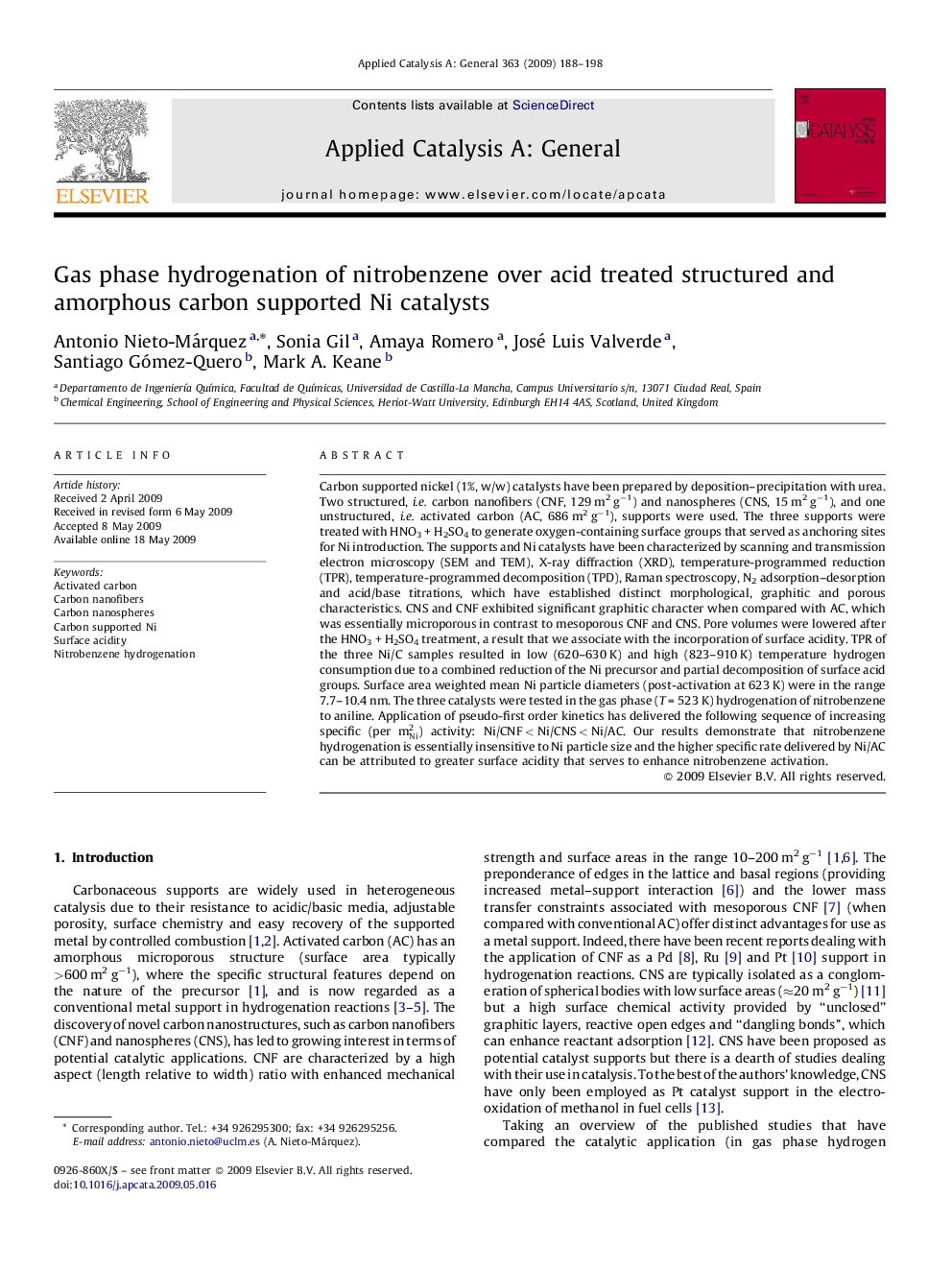| کد مقاله | کد نشریه | سال انتشار | مقاله انگلیسی | نسخه تمام متن |
|---|---|---|---|---|
| 42325 | 45920 | 2009 | 11 صفحه PDF | دانلود رایگان |

Carbon supported nickel (1%, w/w) catalysts have been prepared by deposition–precipitation with urea. Two structured, i.e. carbon nanofibers (CNF, 129 m2 g−1) and nanospheres (CNS, 15 m2 g−1), and one unstructured, i.e. activated carbon (AC, 686 m2 g−1), supports were used. The three supports were treated with HNO3 + H2SO4 to generate oxygen-containing surface groups that served as anchoring sites for Ni introduction. The supports and Ni catalysts have been characterized by scanning and transmission electron microscopy (SEM and TEM), X-ray diffraction (XRD), temperature-programmed reduction (TPR), temperature-programmed decomposition (TPD), Raman spectroscopy, N2 adsorption–desorption and acid/base titrations, which have established distinct morphological, graphitic and porous characteristics. CNS and CNF exhibited significant graphitic character when compared with AC, which was essentially microporous in contrast to mesoporous CNF and CNS. Pore volumes were lowered after the HNO3 + H2SO4 treatment, a result that we associate with the incorporation of surface acidity. TPR of the three Ni/C samples resulted in low (620–630 K) and high (823–910 K) temperature hydrogen consumption due to a combined reduction of the Ni precursor and partial decomposition of surface acid groups. Surface area weighted mean Ni particle diameters (post-activation at 623 K) were in the range 7.7–10.4 nm. The three catalysts were tested in the gas phase (T = 523 K) hydrogenation of nitrobenzene to aniline. Application of pseudo-first order kinetics has delivered the following sequence of increasing specific (per mNi2) activity: Ni/CNF < Ni/CNS < Ni/AC. Our results demonstrate that nitrobenzene hydrogenation is essentially insensitive to Ni particle size and the higher specific rate delivered by Ni/AC can be attributed to greater surface acidity that serves to enhance nitrobenzene activation.
Gas phase hydrogenation of nitrobenzene generated aniline as the sole product where the specific rate constant increased in the order Ni/CNF < Ni/CNS < Ni/AC. Hydrogenation activity was insensitive to Ni particle size and exhibited a proportional increase with increasing surface acidity (mainly carboxylic anhydrides). We attribute this response to an enhanced activation of nitrobenzene at surface acid sites.Figure optionsDownload as PowerPoint slide
Journal: Applied Catalysis A: General - Volume 363, Issues 1–2, 1 July 2009, Pages 188–198